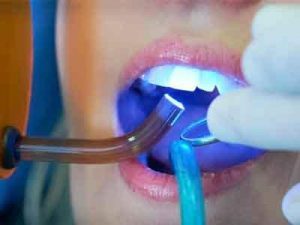- Home
- Editorial
- News
- Practice Guidelines
- Anesthesiology Guidelines
- Cancer Guidelines
- Cardiac Sciences Guidelines
- Critical Care Guidelines
- Dentistry Guidelines
- Dermatology Guidelines
- Diabetes and Endo Guidelines
- Diagnostics Guidelines
- ENT Guidelines
- Featured Practice Guidelines
- Gastroenterology Guidelines
- Geriatrics Guidelines
- Medicine Guidelines
- Nephrology Guidelines
- Neurosciences Guidelines
- Obs and Gynae Guidelines
- Ophthalmology Guidelines
- Orthopaedics Guidelines
- Paediatrics Guidelines
- Psychiatry Guidelines
- Pulmonology Guidelines
- Radiology Guidelines
- Surgery Guidelines
- Urology Guidelines
Updated AAP guidelines for safe dental sedation in children

The American Academy of Pediatrics (AAP) in collaboration with the American Academy of Pediatric Dentistry has released an updated version of its guidance on sedation for dental procedures in children in a clinical report.
“Sedation for dental procedures in children and teenagers is generally safe,” said Charles J. Coté, lead author of the clinical report, who is a pediatrician and a pediatric anesthesiologist. “However, we are aware of adverse outcomes when a single dental provider simultaneously performs the procedure and administers deep sedation or general anesthesia for dental procedures. These guidelines ensure the safety of patients who undergo these procedures.”
The clinical report will be published in the June 2019 issue of Pediatrics.
The purpose of this updated report is to unify the guidelines for sedation used by medical and dental practitioners; to add clarifications regarding monitoring modalities, particularly regarding continuous expired carbon dioxide measurement; to provide updated information from the medical and dental literature, and to suggest methods for further improvement in safety and outcomes.
Recommendations include:
- At least two people with specific training and credentials should be present with a pediatric patient undergoing deep sedation or general anesthesia for dental treatment in a dental facility or hospital. The prior guidelines had called for the presence of at least one trained person with the Pediatric Advanced Life Support certification.
- The sedation should be administered by a qualified anesthesia provider.
- The 2019 guidelines define the role of a qualified anesthesia provider, who may include a medical anesthesiologist, certified registered nurse anesthetist, dentist anesthesiologist or second oral surgeon.
- One of the two trained people required for sedation must be an independent observer who is not involved with performing or assisting with the dental procedure.
- The observer’s sole responsibility is to constantly observe the patient’s vital signs and to be skilled to assist with any medical emergency.
- Both the independent observer and the operating dentist must be certified in Pediatric Advanced Life Support.
For detailed guidelines follow the link: https://pediatrics.aappublications.org/content/143/6/e20191000

Disclaimer: This site is primarily intended for healthcare professionals. Any content/information on this website does not replace the advice of medical and/or health professionals and should not be construed as medical/diagnostic advice/endorsement or prescription. Use of this site is subject to our terms of use, privacy policy, advertisement policy. © 2020 Minerva Medical Treatment Pvt Ltd